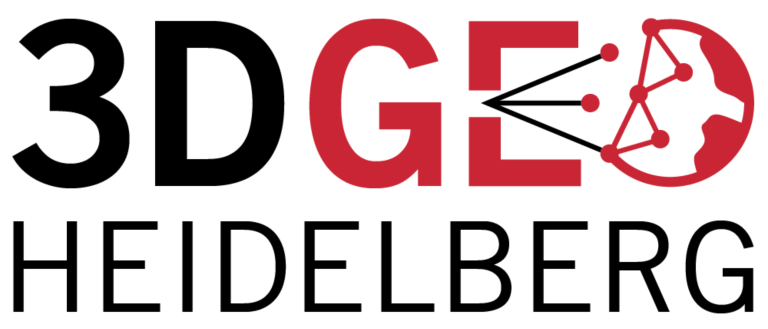GIScience News Blog
-
ISCRAM GIS Track: Deadline extended for WiP and Practitioner papers: February 21, 2021
ATTENTION!! One week deadline extension. Are you working on GIS for disaster management? Hurry up! You have until Feb, 21 to submit your WIP or Practitioner paper to GIS Track. Extended Submission deadline for WiP and Practitioner papers: February 21, 2021 – updated Track: Geospatial Technologies and Geographic Information Science for Crisis Management (GIS) https://www.drrm.fralinlifesci.vt.edu/iscram2021/files/CFP/ISCRAM2021-Track10-Geospatial_Technologies…
-
HeiGIT Services User Feedback Survey – only one more week!
HeiGIT wants to serve you even better. Therefore we are conducting user feedback surveys regarding our various services. If you have ever used one of our OpenStreetMap based Online Services (or will do so now) for whatever purpose, we’d be very happy if you took the time and filled out the respective survey. THANK YOU!…
-
Hells Bells – interactive 3D view of underwater speleothems
In collaboration with the Institute of Earth Sciences at Heidelberg University, the 3DGeo group reconstructed underwater speleothems in a cave in Yucatán, Mexico. The so-called “Hells Bells” are fascinating formations in several sinkholes, at the boundary layer between fresh- and saltwater. The full 3D mesh model obtained from several thousand photographs taken by a professional…
-
Fully automatic spatiotemporal segmentation of 3D LiDAR time series for the extraction of natural surface changes
When and where do changes occur in dynamic natural landscapes? A new method has been published that enables the automatic extraction of surface changes from entire time series of 3D point clouds. The developed method of spatiotemporal segmentation extracts changes regarding their surface change history, which makes it particularly useful for natural scenes that are…
-
Introducing the Ohsome Quality analysT (OQT)
The Ohsome Quality analysT (short OQT) is the name of a new software implemented by HeiGIT that is based on the #ohsome framework. Its main purpose is to compute quality estimations on OpenStreetMap (OSM) data. Any end user such as humanitarian organisations, public administrations, as well as researchers or any other institution or party interested…
-
The evolution of humanitarian mapping within the OpenStreetMap community
In the past 10 years, the collaborative maps of OpenStreetMap (OSM) have been used to support humanitarian efforts around the world as well as to fill important data gaps for implementing major development frameworks such as the Sustainable Development Goals (SDGs). In a recently accepted paper we provide a comprehensive assessment of the evolution of…
-
Humanitarian OSM Stats: How to monitor humanitarian mapping in the HOT Tasking Manager? – Part 2
Since 2010 organized humanitarian mapping has evolved as a constant and growing element of the global OpenStreetMap (OSM) community. With more than 7,000 projects in 150 countries humanitarian mapping has become a global community effort. Due to this large amount of projects it can be difficult to get an overview on mapping activity. This is…
-
German radio report on OpenStreetMap in WDR5 Quarks – Wissenschaft und mehr
The German radio station WDR 5 broadcasted a short report about OpenStreetMap with a focus on basics and navigation in the science programme “Quarks – Wissenschaft und mehr” last month on 19.01.2021. One of the German pioneers of OpenStreetMap – Frederik Ramm – explains some background on how the OpenStreetMap community works. Also Alexander Zipf…
-
Vortrag zu Humanitärem Mapping in OpenStreetMap bei Begabtenförderung des Heidelberger Life‐Science Lab
Das Heidelberger Life‐Science Lab ist eine Einrichtung des Deutschen Krebsforschungszentrums (DKFZ, Heidelberg) und hat die Förderung mathematisch und naturwissenschaftlich-technisch besonders interessierter und begabter Mittel- und Oberstufenschüler und Studenten zur Aufgabe. Der Schwerpunkt ist auf die Life-Sciences gerichtet, die den Standort Heidelberg in besonderem Maße prägen. Aber es werden auch weitergehende MINT Themen beleuchtet: Letzten Freitag…
-
ohsome street network analysis part 2
Welcome to part 2 of the #ohsome street network analysis. If you haven’t read the first part yet, you can do so following this link. As promised, this week we are performing a simple tag completeness analysis, where we are looking at the ratio between streets that have the maxspeed tag added and those which…
-
3D Winter Wonderland – Multi-method acquisition for snow process research
A joint field campaign was conducted this week in the snow-covered black forest (Hundseck, 48.643°N, 8.228°E) by the research groups Hydrology and Climatology (Prof. Menzel) and 3DGeo (Prof. Höfle). Regular in-situ surveys are conducted at the site to investigate snow as crucial component of the hydrologic cycle, forest management, and evapotranspiration. Surveys comprise measurement of…
-
Humanitarian OSM Stats: How to monitor humanitarian mapping in the HOT Tasking Manager? – Part 1
Since 2010 organized humanitarian mapping has evolved as a constant and growing element of the global OpenStreetMap (OSM) community. With more than 7,000 projects in 150 countries humanitarian mapping has become a global community effort. Due to this large amount of projects it can be difficult to get an overview on mapping activity. This is…
3D 3DGEO Big Spatial Data CAP4Access Citizen Science Climate Change Conference crisis mapping Crowdsourcing data quality deep learning disaster DisasterMapping GIScience heigit HELIOS HOT humanitarian humanitarian mapping Humanitarian OpenStreetMap team intrinsic quality analysis landuse laser scanning Lidar machine-learning Mapathon MapSwipe Missing Maps MissingMaps ohsome ohsome example Open data openrouteservice OpenStreetMap OSM OSM History Analytics Quality quality analysis remote sensing routing social media spatial analysis Teaching VGI Workshop


